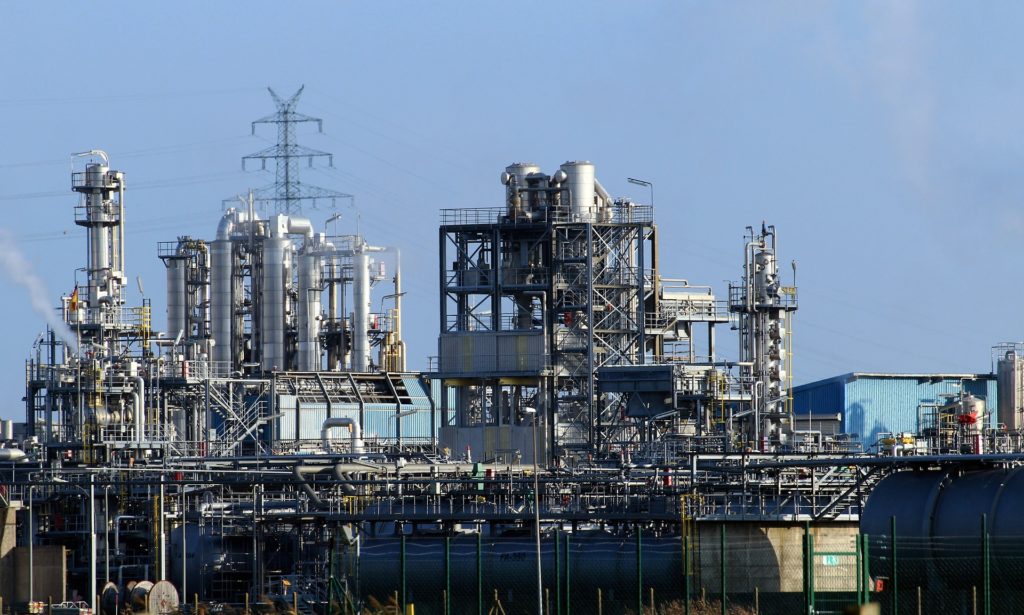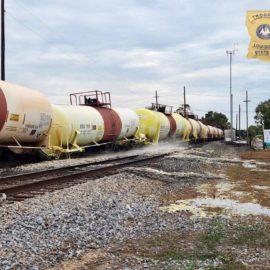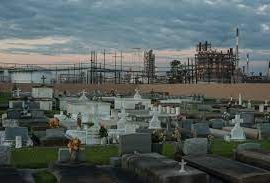
The Formosa Plant in St James Parish is under a microscope nationally. It is becoming the next fight on climate protection against plastic.
At a recent meeting of the St. James Parish Council meeting, chairman Alvin “Shark” St. Pierre held up a mailer that went throughout his district with his face on it. “St. James Parish deserves better,” the flier, paid for by the Protect our Parish group, charges. “Tell Councilman Chairman Alvin St. Pierre: Don’t be fooled by Formosa.” The flyers, which went out last week for all seven Parish Council members, were slick, professionally produced pieces that are rare in this rural parish’s politics. They are emblematic of a pressure campaign against the planned $9.4 billion plastics plant a Formosa Plastics affiliate plans to build there — a pressure campaign that is unusual in recent Louisiana history for its intensity, duration and national scope, advocates and observers said.
theadvocate.com
The U.N., the President, Congress and select Attorney Generals have all spoken against it recently. For years local opposition has been raised. What has this plastic plant done wrong? Make plastic!
Some critics and outside observers say Formosa has become an early test case in a battle over the expansion of plastics production in North America, which some environmentalists see as the next front in the battle with ‘Big Oil.’ And the plant’s sheer size — 14 individual units on nearly 2,400 acres along the Mississippi — has made it a poster child for what a growing progressive movement calls ‘a fight for environmental justice,’ arguing its emissions would have a disparate impact on poor, minority communities. “It’s a real test of the Biden administration and how serious are they are about combating climate change,” said Judith Enck, president of Beyond Plastics, an effort based at Bennington College in Vermont to end plastic pollution.
All this pressure and the plant preparations keep being done and the State, from the Governor down, still back it. Can anything stop it? Possibly not due to the 1,200 permanent jobs, the spin-off companies, the construction workers and the income expected to be generated. Fiscal trumps medical and cultural.
“The entire petrochemical industry is under attack by national environmental activist groups opposed to all industrial development in Louisiana and across the country,” Janile Parks, spokeswoman for Formosa affiliate FG LA, said. “While some of these groups continue to spread fear and confusion about The Sunshine Project, FG continues to work alongside citizens and leaders in Louisiana and in St. James Parish to invite cooperation and truth, and to address real concerns.”
The petrochemical companies, seeing the dropping need for gas and oil, are moving into plastics and chemicals as their next projects.
Steering away from stand-alone refineries — like Shell’s now-shuttered Convent refinery — they are turning to more integrated chemical complexes like Formosa, critics and oil analysts agree. “So plastics production is Plan B for the oil and industry, and Formosa is the poster child for that new situation,” Enck said. A former U.S. Environmental Protection Agency regional administrator under President Obama, Enck counts 47 petrochemical facilities build-outs now in permitting in the United States. Twenty are in Louisiana and 16 are in Texas. And Formosa is one of the earliest and biggest.
Enck is not opposed to Formosa as such but rather sees it as a bell weather project to see if environmental needs or petrochemical needs win the battle. By 2050 petrochemicals will have 50% of world oil growth, up from 14% now.
Demand for oil overall is expected to recover from the coronavirus pandemic and continue to rise but will head for a plateau by 2040, according to S&P Global Platts. Meanwhile, a combination of fuel efficiency, alternative fuels, electrification and public transportation are expected to cut into the importance of transportation as a source of oil and gas demand, the IEA estimates.
The increased opposition has begun first with President Obama as the progressive wing of the democratic party has gained strength. The four years of President Trump further amplified their desires as he rolled back environmental rules and regulations.
David Dismukes, executive director and a professor at the LSU Center for Energy Studies, sees the broad-based effort against Formosa as a sign of the continued sophistication and funding of the progressive movement since President Obama was in office — and the pent-up demand for action during President Trump’s term. He called a recent letter from five East Coast state attorneys general, who urged the U.S. Army Corps of Engineers to scrutinize closely Formosa’s now suspended wetlands permit, an unprecedented step in recent memory. “That is something that took me aback. I mean to have a collective group of attorneys general in other states, essentially, injecting themselves into a sovereign issue in another state is quite unprecedented,” Dismukes said. “I mean what if we were all circling up, Louisiana, Alabama and Mississippi, in order to file jointly to stop permitting windmills? I mean it’s almost the same kind of analogy, not that I would suggest we do that.” The attorneys general have argued what happens in Louisiana affects their residents and their states’ environment. All five are Democrats from blue states.
Nathan McBride, regulatory advisor for the Louisiana Mid-Content Oil and Gas Association says the opposition is against oil but offers no valid alternatives. Also plastic is used in wind and solar energy sites.
The activists fighting Formosa say their efforts aren’t as coordinated or well funded as they might appear from the outside and continues to garner local opposition. Julie Teel Simmonds, senior attorney with the Center for Biological Diversity, one of groups that has fought Formosa in court, said their group doesn’t know how or why the East Coast attorneys general got involved but was only contacted after the fact, as the letter was being developed. Simmonds asserted the sheer size and scope of the facility’s production and pollution are hard to miss. “I think the plastics element is just like another layer of bad that has raised a lot of attention,” she said.
Examples from around the world show how plastic does not degrade.
Environmental groups and research scientists say we’re only starting to understand the damage plastic does to the environment. They point to “garbage patches” on the world’s oceans, the Gulf of Mexico and the Mississippi River as countries across the globe are being sent U.S. waste that isn’t or can’t be recycled here. Creation of the materials also adds greenhouse and toxic gases to the atmosphere, they argue. Utah State University research professor Janice Brahney has found microscopic plastic bits from fabrics used in clothing and from other sources are being thrown aloft in the high atmosphere and deposited in soils, which other research has shown can cut into agricultural production.
Locally? The St James council members are considering a resolution strongly supporting the Formosa plant and the Parish President Pete Dufresne is writing a letter to President Biden challenging the “Cancer Ally” designation. The fight continues.



